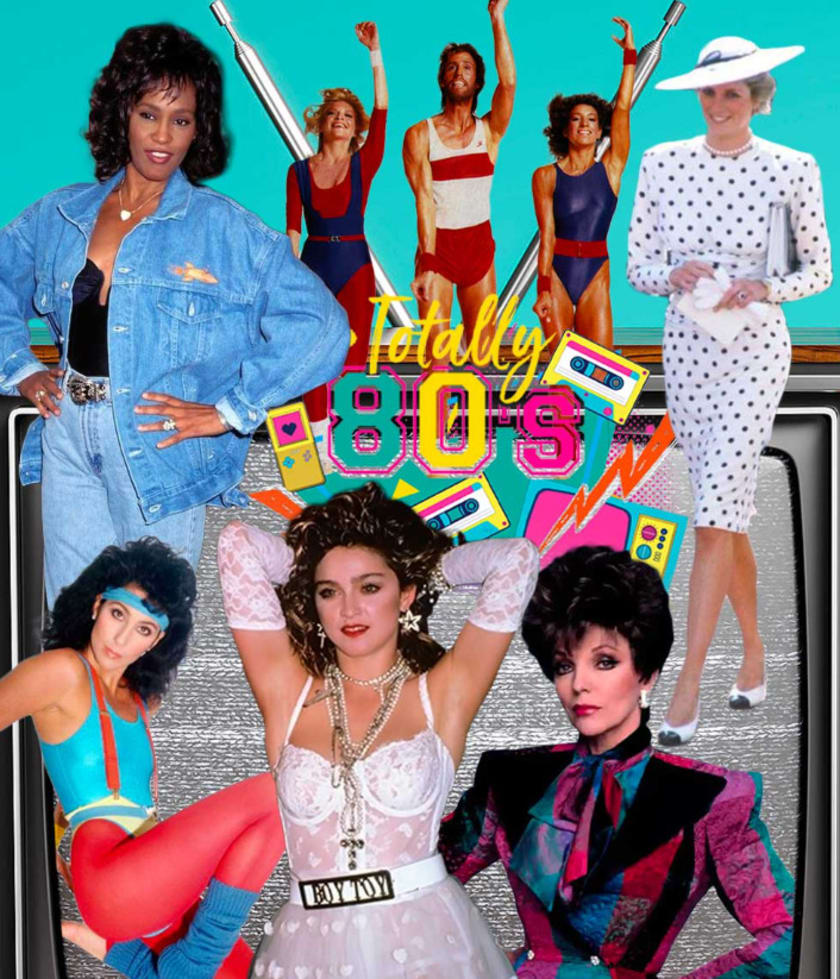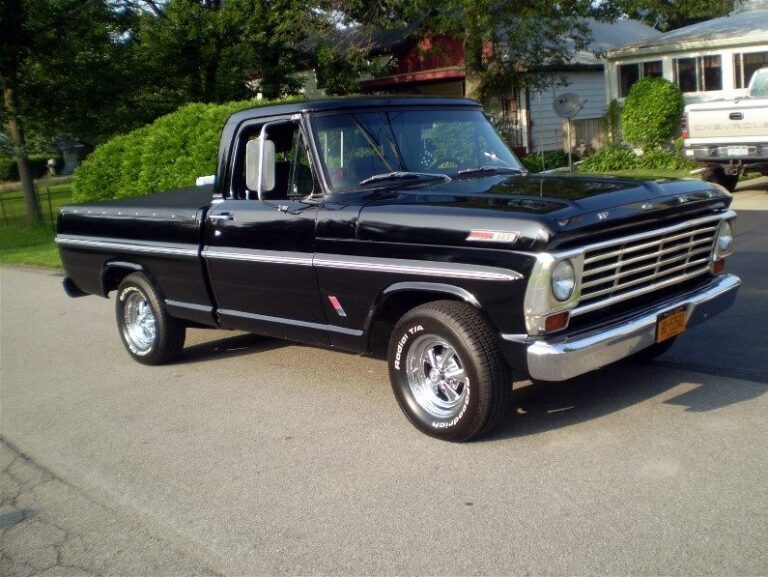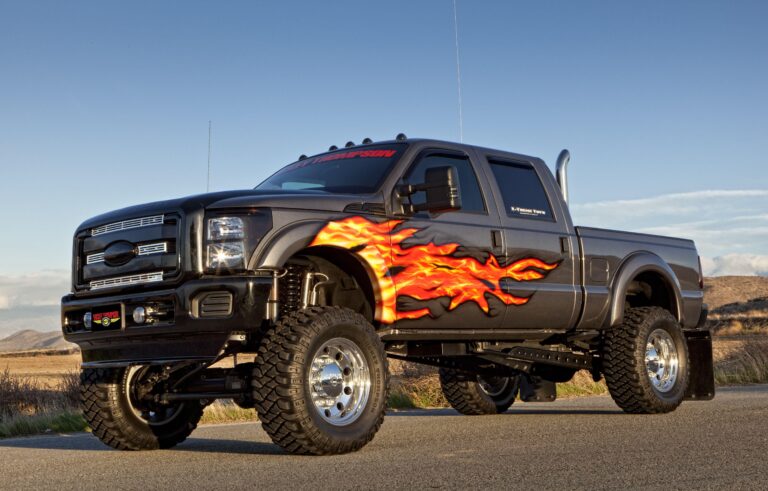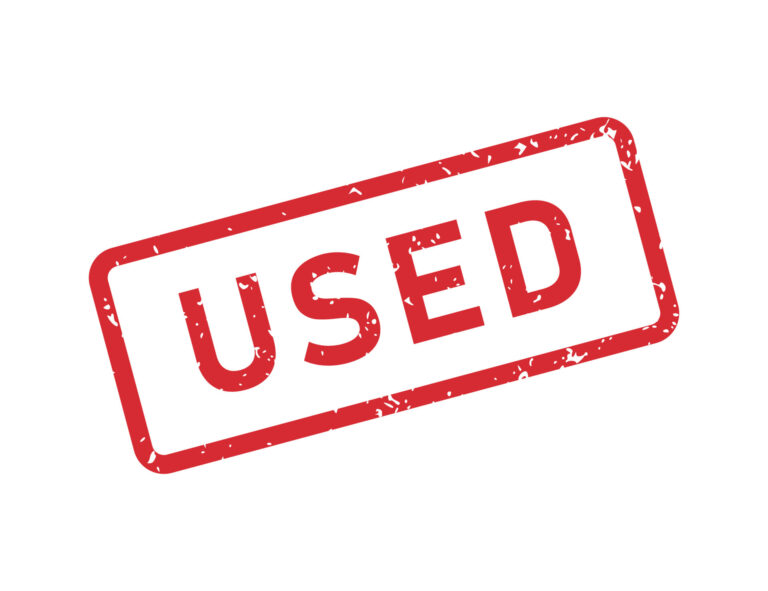80s Ford Trucks For Sale: A Comprehensive Guide to Finding Your Next Classic Hauler
80s Ford Trucks For Sale: A Comprehensive Guide to Finding Your Next Classic Hauler cars.truckstrend.com
In the ever-evolving landscape of automotive trends, some vehicles don’t just endure; they become legends. Among these, the Ford F-Series trucks from the 1980s stand tall, embodying a unique blend of rugged utility, timeless design, and a nostalgic charm that continues to captivate enthusiasts and practical users alike. For sale across various platforms, these ’80s workhorses represent more than just transportation; they offer a tangible piece of American history, a canvas for customization, or simply a reliable, no-nonsense vehicle capable of tackling tough jobs.
This comprehensive guide delves into everything you need to know about finding and acquiring an 80s Ford truck, from understanding their appeal and identifying the right model for your needs, to navigating the buying process and maintaining your vintage pride and joy.
80s Ford Trucks For Sale: A Comprehensive Guide to Finding Your Next Classic Hauler
The Enduring Appeal of 80s Ford Trucks
The 1980s were a pivotal decade for the Ford F-Series. Spanning two distinct generations – the seventh generation (1980-1986), often affectionately called the "Bullnose," and the eighth generation (1987-1991), known as the "Bricknose" – these trucks built upon Ford’s legacy of durability and innovation.
What makes them so appealing today?
- Rugged Aesthetics: Their boxy, muscular lines define an era, exuding a no-nonsense, utilitarian beauty that modern trucks often lack. They look like they mean business, and they usually do.
- Mechanical Simplicity: Unlike their contemporary counterparts, 80s Ford trucks were largely free of complex electronics, making them easier for the average enthusiast to diagnose, repair, and maintain. Parts are often readily available and affordable.
- Unmatched Durability: Built to withstand the rigors of farm work, construction sites, and daily hauling, many of these trucks have racked up hundreds of thousands of miles and continue to run strong, a testament to their robust engineering.
- Nostalgia Factor: For many, these trucks evoke memories of childhood, family road trips, or hard work alongside a trusted machine. They’ve featured prominently in films, television shows, and the cultural fabric of the decade.
- Versatility: From a dependable daily driver to a capable off-road rig, a show-stopping custom, or a dedicated work truck, an 80s Ford F-Series can be adapted to almost any purpose.

This combination of classic styling, mechanical straightforwardness, and inherent toughness makes 80s Ford trucks an attractive proposition for anyone seeking a vehicle with character and capability.
Identifying Your Ideal 80s Ford Truck
Before you start your search, understanding the variations within the 80s F-Series lineup is crucial. Your ideal truck will depend on your intended use, budget, and personal preferences.

Generations:
- 1980-1986 (Bullnose): Characterized by a more traditional, squared-off grille design, often with prominent horizontal bars and large, square headlights. Interiors were functional but less refined. These years saw the transition from the F-100 to the F-150 as the entry-level model.
- 1987-1991 (Bricknose): Ford introduced a more aerodynamic front end, with flush-mounted composite headlights and a sleeker grille. The interior received significant updates for improved ergonomics and comfort. While still boxy, it was a step towards modern truck design.

Models and Capabilities:
- F-150 (Half-Ton): The most common and versatile model, suitable for light hauling, daily driving, and recreational use. Available in 2WD and 4WD.
- F-250 (Three-Quarter-Ton): Heavier duty than the F-150, with stronger suspension and chassis components, ideal for heavier towing and hauling.
- F-350 (One-Ton): The stoutest of the lineup, designed for serious work, often featuring dual rear wheels (dually) for maximum stability and payload capacity.
Body Styles:
- Regular Cab: Two-door, single row of seating. Most common and often lightest.
- SuperCab: Extended cab with a small rear seating area, offering more interior storage or occasional passenger space.
- Crew Cab: Four full doors, providing ample seating for a full crew. Rarer and often more sought after, especially in good condition.
- Bed Lengths: Short Bed (approx. 6.5 ft) or Long Bed (approx. 8 ft).
Engine Options:
- Gasoline:
- 300 cu in (4.9L) Inline-Six: Legendary for its bulletproof reliability, low-end torque, and surprising fuel economy for its era. A fantastic choice for a work truck or daily driver.
- 302 cu in (5.0L) V8: A popular option, offering a good balance of power and efficiency.
- 351 cu in (5.8L) Windsor/Cleveland V8: More power than the 302, suitable for moderate towing.
- 460 cu in (7.5L) V8: The largest gasoline engine, offering maximum power and torque for heavy-duty applications, albeit with significant fuel consumption.
- Diesel (Navistar IDI):
- 6.9L IDI (1983-1987): Ford’s first in-house diesel option (though built by Navistar), known for its simplicity and durability.
- 7.3L IDI (1988-1991): An evolution of the 6.9L, offering slightly more power. These pre-Powerstroke diesels are sought after for their mechanical injection simplicity.
Transmissions & Drivetrain:
- Manual: 4-speed (NP435, T18), 5-speed (ZF5). Known for their robustness.
- Automatic: C6 (heavy-duty, 3-speed), AOD (4-speed overdrive, better fuel economy), E4OD (electronically controlled 4-speed, later models).
- Drivetrain: 2WD (rear-wheel drive) or 4WD (four-wheel drive) with various transfer case options.
Trim Levels:
- Custom/XL: Basic work-oriented trims.
- XLT: Mid-range, offering more comfort and convenience features.
- XLT Lariat: Top-tier trim with chrome accents, upgraded interiors, and more amenities.
Consider your primary use: a daily driver will benefit from an F-150 with a 300 I6 or 302 V8 and an AOD transmission, while a heavy hauler might require an F-250/350 with a 460 V8 or a diesel.
Where to Find 80s Ford Trucks For Sale
The digital age has made finding classic vehicles easier than ever, but local connections remain valuable.
- Online Marketplaces:
- eBay Motors: Wide selection, auction format, good for comparing prices.
- Craigslist/Facebook Marketplace: Excellent for local finds, often from private sellers. Be prepared for varying levels of detail and condition.
- Bring a Trailer (BaT): Curated auctions, typically featuring higher-quality, well-documented examples. Prices can be premium.
- Hemmings Motor News: Long-standing classic car marketplace, both online and print.
- ClassicCars.com: Dedicated platform for vintage vehicles.
- Dedicated Forums & Social Media Groups: Join 80s F-Series forums or Facebook groups. Members often list trucks for sale or can provide leads.
- Local Classifieds & Word-of-Mouth: Check local papers, community bulletin boards, and let friends and family know you’re looking. Many gems are found this way.
- Classic Car Dealerships/Specialists: Offer pre-inspected vehicles, but typically at a higher price point.
- Estate Sales & Auctions: Can be a source of untouched "barn finds," but require quick decision-making and often "as-is" purchases.
What to Look For: A Buyer’s Guide
Buying an older truck requires a keen eye and a methodical approach. Don’t rush the process.
- Rust: This is the primary enemy of any 80s vehicle.
- Common Spots: Cab corners, rocker panels, fender arches, floor pans, bed sides (especially around wheel wells), tailgate, and the frame rails.
- Inspect Thoroughly: Bring a flashlight. Tap on suspicious areas. Surface rust is manageable, but widespread structural rust is a major red flag and costly to repair.
- Engine & Transmission:
- Engine: Listen for strange noises (knocks, ticks, excessive lifter noise), check for smoke from the exhaust (blue for oil, white for coolant, black for rich fuel). Look for leaks (oil, coolant). Check the oil cap and dipstick for milky residue (sign of coolant in oil).
- Transmission: On automatics, check fluid color (should be red, not brown or black) and smell (burnt smell is bad). Test all gears, including reverse. For manuals, check clutch feel and listen for grinding.
- Test Drive: Does it shift smoothly? Does it pull strongly? Does it overheat?
- Suspension & Steering:
- Look for excessive play in the steering wheel.
- Check for worn ball joints, tie rods, and shock absorbers.
- Bounce each corner of the truck – it should rebound once or twice, not bounce continuously.
- Brakes: Test them thoroughly. Listen for grinding, squealing. Check for pulling to one side.
- Electrical System: Test all lights (headlights, taillights, turn signals, brake lights), wipers, horn, radio, power windows (if equipped), and dashboard gauges.
- Interior Condition: Check seats for rips/tears, dashboard for cracks (common), headliner, and door panels. Evaluate overall cleanliness.
- Documentation: Ask for service records. A clear title is non-negotiable. Verify the VIN on the title matches the vehicle.
- Pre-Purchase Inspection (PPI): If you’re serious about a truck, especially one from a distance, invest in a professional inspection by a trusted mechanic familiar with older vehicles. This can save you thousands in unexpected repairs.
- Mileage vs. Condition: High mileage is common. Don’t let it deter you if the truck has been well-maintained. A lower-mileage truck that sat for years might have more issues than a high-mileage daily driver.
Restoration, Customization, and Maintenance Tips
Once you’ve acquired your 80s Ford truck, the journey truly begins.
- Restoration: Decide on your level of restoration. A full frame-off restoration can be costly but yields a show-quality vehicle. A driver-quality restoration focuses on getting it mechanically sound and presentable. Parts availability is excellent, with numerous aftermarket suppliers for body panels, trim, interior components, and mechanical parts.
- Customization: These trucks are a blank slate for personalization. Popular modifications include lift kits, larger wheels and tires, engine swaps (e.g., modern Coyote V8, diesel conversions), upgraded brakes, air conditioning retrofits, and modern audio systems.
- Maintenance: Their mechanical simplicity makes them rewarding to maintain.
- Fluids: Regular oil changes, transmission fluid, differential fluid, and coolant flushes are critical.
- Tune-Ups: Spark plugs, wires, cap, rotor, fuel filter, air filter.
- Common Issues & Solutions:
- Rust: Address quickly. Small spots can be sanded and painted. Larger areas require cutting out and welding in new metal.
- Carburetor Issues (pre-1987): Rebuilding or replacing the carburetor is common. Many opt for EFI conversions for improved reliability and fuel economy.
- Steering Play: Often due to worn steering box, rag joint, or tie rods. All are replaceable.
- Electrical Gremlins: Often traced to corroded grounds or aging wiring. A wiring diagram and a multimeter are your best friends.
- Worn Suspension Components: Bushings, shocks, leaf springs can be easily replaced.
The Investment Aspect
While not generally "investment vehicles" in the same vein as rare sports cars, well-preserved or expertly restored 80s Ford trucks, especially desirable configurations (e.g., Crew Cab 4×4, XLT Lariat with a good engine), have shown steady appreciation. The cost of ownership is relatively low due to affordable parts and simple maintenance. Their enduring popularity suggests their value will remain stable or gradually increase for good examples. The real value, however, often lies in the utility, the joy of ownership, and the satisfaction of preserving a piece of automotive history.
Price Table: Estimated Values for 80s Ford Trucks For Sale
This table provides a general price range for common 80s Ford F-Series trucks, depending heavily on condition, mileage, options, and regional market demand. Prices are in USD.
| Model/Trim (Example) | Year Range | Engine (Common) | Drivetrain | Condition: Poor/Fair ($) | Condition: Good ($) | Condition: Excellent ($) |
|---|---|---|---|---|---|---|
| F-150 XL Regular Cab | 1980-1991 | 300 I6 / 302 V8 | 2WD | $1,500 – $3,500 | $4,000 – $7,000 | $8,000 – $15,000+ |
| F-150 XLT Lariat SuperCab | 1980-1991 | 302 V8 / 351 V8 | 2WD | $2,000 – $4,500 | $5,000 – $9,000 | $10,000 – $20,000+ |
| F-150 XLT Lariat Regular Cab | 1980-1991 | 300 I6 / 302 V8 | 4WD | $2,500 – $5,000 | $6,000 – $12,000 | $13,000 – $25,000+ |
| F-250 XL Regular Cab | 1980-1991 | 300 I6 / 460 V8 | 2WD | $1,800 – $4,000 | $4,500 – $8,000 | $9,000 – $16,000+ |
| F-250 XLT Lariat SuperCab | 1980-1991 | 351 V8 / 460 V8 | 4WD | $3,000 – $6,000 | $7,000 – $14,000 | $15,000 – $30,000+ |
| F-350 XL Crew Cab (Dually) | 1980-1991 | 460 V8 / 7.3L IDI | 2WD/4WD | $4,000 – $8,000 | $9,000 – $18,000 | $20,000 – $40,000+ |
| F-250/F-350 w/ Diesel (IDI) | 1983-1991 | 6.9L / 7.3L IDI | 2WD/4WD | $3,500 – $7,000 | $8,000 – $16,000 | $18,000 – $35,000+ |
Note: "Poor/Fair" indicates a project vehicle or one needing significant work. "Good" means a solid, running driver with some cosmetic flaws. "Excellent" means a well-maintained original or a high-quality restoration.
Frequently Asked Questions (FAQ)
Q: Are parts readily available for 80s Ford trucks?
A: Yes, very much so. Due to their popularity and the long production runs of many components, both new aftermarket parts and used OEM parts are widely available. Engine and drivetrain components are especially common.
Q: How much does it cost to restore an 80s Ford truck?
A: Restoration costs vary wildly. A full frame-off restoration can easily cost $20,000 to $50,000 or more, depending on the truck’s initial condition, your desired level of perfection, and whether you do the work yourself or hire professionals. A more modest mechanical and cosmetic refresh might be $5,000 to $15,000.
Q: Are 80s Ford trucks reliable as daily drivers?
A: Absolutely, if well-maintained. The 300 I6 and IDI diesel engines are particularly known for their longevity and reliability. Expect lower fuel economy and fewer modern conveniences than a new truck, but they are perfectly capable of daily driving.
Q: Which engine is considered the most reliable?
A: The 300 cubic inch (4.9L) inline-six gasoline engine is legendary for its durability and simplicity. It’s often cited as one of the most reliable engines Ford ever produced. The 6.9L and 7.3L IDI diesels are also highly regarded for their mechanical robustness.
Q: What’s the difference between a "Bullnose" and a "Bricknose"?
A: "Bullnose" refers to the 7th generation (1980-1986) F-Series with its more traditional, blocky grille and square headlights. "Bricknose" refers to the 8th generation (1987-1991) with its more aerodynamic, flush-mounted headlights and refined grille, resembling a brick-like shape.
Q: Can I put modern features into an old Ford truck?
A: Yes, many owners upgrade their 80s Fords with modern conveniences like electronic fuel injection (EFI) conversions, air conditioning, upgraded audio systems, LED lighting, and even engine swaps for more power or efficiency.
Conclusion
The appeal of 80s Ford trucks for sale is more than just nostalgia; it’s a testament to a period when trucks were built with straightforward utility and rugged dependability in mind. Whether you’re a seasoned mechanic looking for a rewarding project, a first-time classic owner seeking an accessible entry point, or simply someone who appreciates the honest, no-frills character of vintage American iron, an 80s Ford F-Series offers a compelling proposition.
By understanding the different models, knowing where to look, and performing a thorough inspection, you can find a solid platform that will serve you faithfully for years to come. Owning an 80s Ford truck isn’t just about driving; it’s about connecting with a legacy, enjoying the satisfaction of mechanical simplicity, and becoming part of a passionate community. Take your time, do your research, and prepare to embark on a journey with a true automotive icon.






